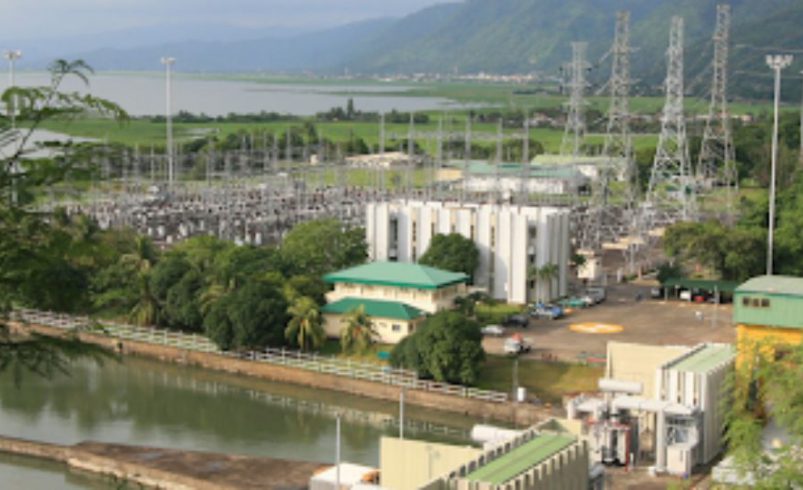Pumped-storage and hydro power
- August 4, 2025
- 0

by Suiee Suarez, AboitizPower VP for Corporate Affairs
Recently, pumped-storage hydro has caught the attention and interest of the general public, mostly owing to two major pieces of news from the Philippine energy sector.
First, the third round of the Green Energy Auction program or GEA-3 was conducted last February, which led to potential winning bids for 6,350 megawatts of pumped-storage hydro, as well as 300+ megawatts of impounding hydro and geothermal capacity.
Second was the privatization of the Caliraya-Botocan-Kalayaan (CBK) hydroelectric power plants in Laguna, which contain the Kalayaan I and Kalayaan II pumped-storage power plants.
Aboitiz Renewables Inc., Sumitomo Corporation, and the Electric Power Development Co., Ltd. (J-Power) — collectively the Thunder Consortium — submitted the highest bid to the Philippine government via the Power Sector Assets and Liabilities Management Corp. (PSALM).
This growing attention and interest is a good sign since hydro in general is seemingly an underrated source of power, perhaps because it is old and overshadowed by developments in solar, wind, and batteries, which, granted, are easier and faster to build and scale up.
Nonetheless, it is still hydro that accounts for a higher share of the Philippine power mix today with about 13% of flexible, dependable capacity, as against 9-10% from intermittent solar and wind capacities combined. In addition, hydro’s sheer storage capacity still overtakes that of batteries, which has yet to reach 12-24 hours of energy storage even amidst huge advances in the technology.
It should be pointed out that hydro can cover all the bases, doing everything from catering to baseload (think hydro plants in the vicinity of the Niagara Falls) to even providing long-duration storage (think Magat dam and Kalayaan’s I and II of CBK), as well as ancillary services, so long as there is available and sufficient water. Rainy seasons, such as the one we recently experienced, is when dams and reservoirs can “recharge” and store water for later use in power generation and even irrigation.
Like most of its peers, CBK embodies the multifunctionality of hydro power. While the complex contains a hydro power capacity of 62.28 megawatts, its main features are the aforementioned Kalayaan’s I and II, which offers 366 megawatts and 368.36 megawatts, respectively, of pumped-storage hydro capacity. Imagine pumped-storage hydro as a large-scale natural battery, pumping water uphill to a reservoir (in this case, the Caliraya reservoir), then released back downhill (back to the Laguna Lake) through turbines, using the force of gravity to generate power.
Since the process of pumping water uphill requires electricity, it is ideally done when electricity demand is low, only to be released back at the optimal moment. However, as the grid onboards more solar, wind, and in the future nuclear power, pumped-storage hydro can utilize more of the surplus electricity from these sources to pump the water. Inversely, when solar and wind are unavailable, that’s when the water can be released to account for the gap in power generation.
In effect, serving as energy storage, pumped-storage hydro can help balance fluctuations in supply and demand and support the grid, especially in periods when there is insufficient wind or sunlight. This just goes to show why we need a diverse lineup of power generation technologies in the power ecosystem that counteract each other’s weaknesses and ensure that electricity is readily available 24/7 (read “National and global contexts of growing electric power”, Power Philippines, June 16, 2025).
For full disclosure, hydro power, much less pumped-storage hydro, is no silver bullet. Hydro plants experience low-capacity factors especially during hot dry seasons, meaning they have lower contributions to the overall pie because of the decrease in water supply. In 2023 for instance, hydro had a capacity factor of 24.1-25.4% during the first half of the year due to the summer months before eventually rising to 31.8-39.2% in the second half. Zeroing in on the Luzon grid in the same year, hydro’s contribution to the generation mix ranges from as low as 3.9% (Q2) to as high as 8.7% (Q3). This is where other forms of power generation that fit a particular circumstance come in.
Moreover, hydro is rather costly to build because it takes a lot more time and would require larger spaces that are geographically suitable (i.e. it’s not possible to just build it anywhere).
This can also be taken as a risk to building new capacities as the return on the high capital investment may take longer to materialize.
In the Philippines, power plants over 50 years of age are mostly, if not all, hydro power plants (followed closely by geothermal). Taking CBK as an example, its Caliraya hydroelectric plant was commissioned in 1942, while its Botocan hydroelectric plant was built way back in 1930 — the oldest in the country — with other units being commissioned in 1947. On the other hand, Kalayaan was built in 1982, being the firs
But with new pumped-storage hydro coming in, as was made apparent by GEA-3, the challenge for old hydro plants like CBK is to further optimize its output and reliability so that it can competitively operate for many more years and continue to help the Philippines in its energy transition.

About
Suiee Suarez is the Vice President for Corporate Affairs of Aboitiz Power Corporation. He is responsible for driving the AboitizPower brand, corporate communications, sustainability, andpublic relations functions.
Prior to joining AboitizPower, Suiee had 25 years of experience in communications, corporate social responsibility, commercial oil products businesses, stakeholder relations, and project management. He was also the Global Campaign Manager for the Future of Energy and Projects for Shell International B.V., where he also served as a member of the Shell Scenario team. He led scenario studies on urbanization in the Philippines, Indonesia and India.
Suiee holds a Bachelor’s degree in Industrial Engineering from the University of the Philippines Diliman, and currently serves on the board of directors of the UP Industrial Engineering Alumni Association. He also completed certification courses on Global Cities: Governance, Planning and Design, and Climate Change from the London School of Economics.